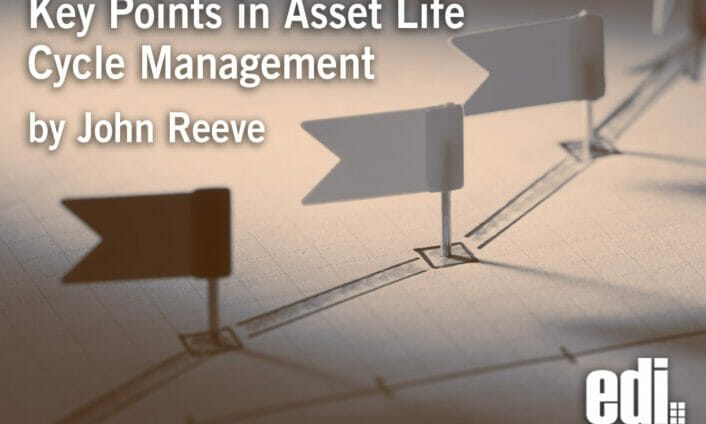NEWS AND INSIGHT
Categories
Tags
Recent Posts
Key Points in Asset Life Cycle Management

Commissioning
The secret to proper commissioning is to write a construction contract that not only talks about data capture requirements but mandates a specific format for subsequent load to CMMS. Otherwise you will get a hodge-podge of Excel, Word, paper documents, and even email at the 11th hour, which I will call the worst case scenario. Then, leadership will have to create a new project team to walk-down the buildings and systems. A better approach is listed below:
- Identify assets early and create a primary key, capture purchase price, create an asset tag at receipt, take a picture of the asset and nameplate data. NOTE: It may be necessary to write down a definition of “what really is an asset.”
- Link spare parts to the asset.
- Identify suggested maintenance tactics per OEM.
Operational Phase
- Create location hierarchy, link assets to location, capture installation date (or date operational), and populate replacement cost.
- Create failure codes and link failure class to locations and assets.
- Document mission/vision, create SAMP, create a CMMS utilization plan, and select CMMS.
- Identify your Core Team & Reliability Team.
- Document endgame and strategies to optimize ROA, create a roadmap to excellence, and define analytical reports.
- Configure CMMS to support endgame and analytical reports.
- Perform RCM analysis on critical systems/assets and store RCM analysis results (maintenance strategies & failure modes) inside the CMMS.
- Document advanced processes: RCA trigger points, chronic failure analysis, future scheduling methods, WO feedback, risk-based prioritization, and defect elimination.
- Create a program to establish “reliability leaders” throughout the organization.
- Create a long-range plan (some of the above may take years to implement).
Data Quality Can Be an Issue
Analytics depend on data quality. But is it even the right data to begin with? Inputs need to be linked to outputs. Accountability starts with a RACI chart, followed by training and data checks. Data quality is only achieved by constant monitoring, which includes Business Analyst interviews, SQL error checks, and process audits.
Asset Performance Management
As with any asset management system, this is one of the key areas to extract value. Using a closed-loop process, you can create a “living program” to identify bad actors and continually refine maintenance tactics and failure modes. The four main feedback loops are shown above:
- Defect elimination
- Root cause analysis
- Chronic failure analysis
- Work order feedback







